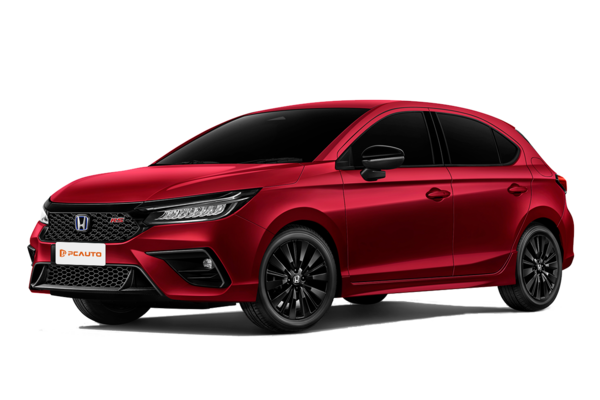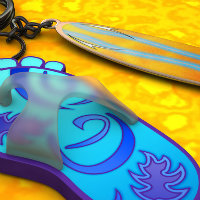Q
chery car made in which country
Chery is a well-known Chinese automaker with its headquarters in Wuhu, Anhui Province. The brand manufactures most of its vehicles in China and exports them to numerous countries worldwide, including Malaysia. Chery has caught the market's attention with its strong value-for-money proposition and diverse lineup, which spans subcompact cars, SUVs, and electric vehicles. In recent years, the company has been actively expanding its global footprint, and in Malaysia, it's making inroads by partnering with local distributors to sell popular models like the Omoda and Tiggo series.
For Malaysian consumers, Chery offers budget-friendly options tailored to local needs, and it's steadily building up its after-sales service network to enhance the overall ownership experience. What's more, Chery is keeping the pedal to the metal on research and development, particularly in the new energy sector, rolling out several electric models to align with the global shift towards greener mobility.
If you're thinking about getting a Chery, we'd recommend heading to an authorized dealership for a test drive, checking out the latest promotions, and comparing it with other models in its class to make sure it's the right fit for you.
Special Disclaimer: This content is published by users and does not represent the views or position of PCauto.
Popular Models
Related Q&A
Q
What engine is in a 2014 Holden Colorado?
The 2014 Holden Colorado offered two turbocharged four-cylinder diesel options – a 2.5L unit pushing out 110kW and 350Nm, and a more potent 2.8L variant delivering 147kW and 440Nm. Both engines feature common-rail direct injection, striking a balance between fuel efficiency and strong low-rev torque that's perfect for towing or hauling loads.
Built as a workhorse ute, the Colorado's powertrain prioritizes durability and low maintenance costs. Buyers could choose between a five-speed manual or six-speed auto transmission. These diesel mills really shine when tackling steep inclines or carrying payloads – their torque-rich nature delivers effortless climbing and smooth acceleration. Modern diesel tech also means they're far more refined than old-school oil-burners, with noise and vibration levels approaching petrol-engine smoothness.
Pro tip: Stick to the recommended service intervals (especially diesel filter changes) and always use quality fuel to keep these engines performing at their best.
Q
Is the 2018 Mercedes AMG GT reliable?
The 2018 Mercedes-AMG GT has proven to be fairly reliable overall. Its hand-built 4.0L V8 biturbo engine—tuned by AMG—delivers brutal power while maintaining decent mechanical robustness, with relatively few reported major issues. That said, expect higher running costs than your average commuter car. You'll chew through brakes and tires much faster, and those AMG-specific parts don't come cheap.
The tech suite can be a bit fussy at times—we're talking occasional glitches like infotainment gremlins or false sensor warnings—but most issues are sorted with a software patch or minor fixes. Stick religiously to the factory maintenance schedule using genuine fluids and components, and you'll dodge 90% of potential headaches.
Driving enthusiasts will find the visceral exhaust note and razor-sharp handling worth every penny, though that low-slung front splitter means you'll be dodging potholes like they're landmines. If you're shopping used, prioritize examples with full dealer service history and get a prepurchase inspection focusing on the transmission, suspension, and cooling system—these are the big-ticket items that could ruin your day.
Q
How much is a used Mercedes GLE 2024?
In Malaysia, the price of a used 2024 Mercedes-Benz GLE can vary depending on factors like condition, mileage, specifications, and warranty status. Right now, new models go for around RM500,000 to RM700,000, so used ones are probably in the RM400,000 to RM600,000 range—exact pricing depends on actual availability and market trends. As a luxury SUV, the GLE is popular for its great comfort, advanced tech features, and strong performance. The 2024 model likely comes with the latest MBUX infotainment system and driver assistance functions, making the experience even better. When buying a used GLE, it’s a good idea to go through official certified channels or reputable dealers to make sure the vehicle has been thoroughly inspected and still has warranty coverage. Also, check the maintenance records and accident history to avoid potential issues. Besides that, Malaysia’s used car market is affected by import taxes, exchange rates, and supply and demand, so prices can change anytime. It’s wise to compare options and consult professionals before making a purchase.
Q
What is the most sold Toyota in 2023?
Looking at global and Malaysian market data for 2023, Toyota's top-selling model is the Corolla Cross. This compact SUV has won over plenty of buyers with its versatility, fuel efficiency, and the tried-and-true reliability Toyota is known for. Here in Malaysia, it's a hit because it blends city-friendly agility with just enough off-road capability to handle local road conditions, making it perfect for family needs.
In Southeast Asia, the Corolla Cross comes in both petrol and hybrid variants, and the hybrid is especially popular. Let's face it, with fuel prices being what they are, Malaysians really appreciate the significant fuel savings hybrids deliver – that's a big selling point.
But Toyota's success in Malaysia isn't just about the Corolla Cross itself. They've got a solid after-sales service network, and their vehicles hold their value well on the used car market – two things that matter a lot to local car buyers. Sure, competitors like the Honda HR-V and Mazda CX-30 are strong contenders, but Toyota stays ahead thanks to the trust people have in the brand and generally lower maintenance costs.
Q
How much is Innova Zenix 2023 in Malaysia?
The 2023 Toyota Innova Zenix comes with varying price tags in Malaysia depending on the trim and specs you go for. The base 2.0X starts at around RM 165,000, while the top-spec 2.0V can set you back roughly RM 180,000. Keep in mind, these prices might dip a bit with dealer promotions or if you opt for extra accessories.
As Toyota's main player in Malaysia's MPV segment, the 2023 Innova Zenix gets some solid upgrades – think a snazzier exterior, nicer interior materials, and better tech. Highlights include a bigger touchscreen, advanced driver-assist systems, and a more efficient 2.0L naturally aspirated engine, striking a good balance between family-friendly comfort and practicality.
Malaysian buyers have long loved the Innova Zenix for its reliability, roomy cabin, and strong resale value. It’s especially popular with big families or folks who hit the road for long drives often. If you’re in the market for an MPV, besides checking the price, it’s worth cross-shopping against rivals like the Honda BR-V or Mitsubishi Xpander to find the one that best fits your needs and wallet.
Q
Who makes the most reliable CVT transmission in 2020?
Back in 2020, Toyota and Honda were widely regarded as two of the top brands when it comes to building reliable CVT transmissions, and they've also got a solid reputation in the Malaysian market. Toyota's Direct Shift-CVT really steps up the game by adding a launch gear, which boosts both durability and responsiveness—perfect for zipping around the city. Honda's CVT, on the other hand, is all about that smooth, seamless ride and great fuel economy, which is why you'll find it in popular models like the City and Jazz. Nissan's Xtronic CVT is no slouch either; it's proven to be pretty steady, especially in models like the X-Trail and Almera where it adapts well to different driving conditions.
CVTs are loved for their continuously variable gear ratios, delivering a super smooth drive and better gas mileage. But here's the thing—unlike traditional automatic gearboxes, they need a bit more TLC. Regularly changing the specific CVT fluid is crucial to prevent overheating issues down the line. For Malaysian buyers looking at CVT-equipped cars, it's smart to check out the brand's reputation and how well the model suits local conditions. And don't skip the manufacturer's maintenance recommendations—sticking to those will go a long way in keeping your CVT reliable for years to come.
Q
What size is the LDV T60 2022?
The 2022 LDV T60 is a mid-size pickup truck, measuring 5365mm in length, 1900mm in width, and 1809mm in height, with a wheelbase of 3155mm. This sizeable footprint translates to a roomy cabin for passengers and a practical cargo bed, making it a solid fit for Malaysian users—whether it's for daily commuting or getting those business deliveries done. With a ground clearance of 215mm, the T60 boasts decent off-road capability, easily handling Malaysia's diverse road conditions, be it smooth city tarmac or those rough and tumble rural tracks. Under the hood, you'll find a 2.0-litre turbocharged diesel engine, which serves up plenty of grunt while keeping fuel consumption in check—perfect for those long drives or when you need to haul a heavy load. For Malaysian buyers, when picking a pickup, size and power are important, but so is durability and a reliable after-sales network. The LDV T60 strikes a good balance in these areas, making it a practical choice worth considering.
Q
How much does the Omoda C9 cost?
Over in Malaysia, the Omoda C9 is starting at around RM108,800, though the exact price can vary a bit depending on the trim level you pick and any ongoing promotions. Your best bet is to hit up your local authorized dealer for the latest figures. As a fresh-faced SUV in the market, the C9 is all about that youthful vibe and tech-forward features. Under the hood, you're looking at a 1.5L turbocharged engine pushing out 147 horsepower, paired with a smart infotainment system and some pretty solid advanced driver assistance features – all in all, it’s shaping up to be a pretty competitive package for the money. If you’re a Malaysian shopper, besides keeping an eye on the sticker price, it’s worth checking out the government’s EEV (Energy Efficient Vehicle) tax incentives. Some models that meet the criteria might score you a nice little tax break. Also, before you sign on the dotted line, do yourself a favor and cross-shop with segment rivals like the Proton X70 or Honda HR-V. Figure out which specs matter most for your needs, and definitely don’t skip booking a test drive to get a real feel for how it handles.
Q
How much is Omoda C9 PHEV in Malaysia?
Omoda hasn't officially announced the price tag for the C9 PHEV in Malaysia just yet. But if we look at where Omoda positions itself in the market and check out the current price range of other plug-in hybrid SUVs in the same class – think Proton X90 or Haval H6 HEV – we're probably looking at a ballpark figure between RM120k to RM150k. Of course, we’ll have to wait for the brand to drop the official numbers to be sure.
Billed as an eco-friendly and tech-forward SUV, the Omoda C9 PHEV is expected to pack a 1.5-liter turbocharged engine paired with an electric motor for its plug-in hybrid setup. Word on the street is it might deliver over 50km of pure electric range, which should be more than enough for daily commutes and help keep those fuel bills in check.
Good news for buyers: Malaysia’s government offers import tax breaks and road tax incentives for PHEV models, so you could save even more when you sign on the dotted line. If this Omoda has caught your eye, your best bet is to keep tabs on Omoda Malaysia’s official channels or swing by an authorized showroom for the latest deets. And hey, it never hurts to cross-shop with other PHEV SUVs in the segment – compare specs, after-sales policies, and all that jazz to make sure you’re getting the ride that fits your needs like a glove.
Q
What is the most scrapped car in 2024?
Industry data for 2024 shows Malaysia's most commonly scrapped vehicles are predominantly aging models over 15 years old – think early 2000s economy cars. These workhorses are hitting the scrapyard mainly due to outdated technology, skyrocketing repair bills, and the country's tightening emissions regulations.
Locally assembled classics like the older Proton Saga and Perodua Kancil top the scrap heap, which makes sense given their massive market penetration back in the day and the natural wear-and-tear from years of faithful service. Adding to the scrap pile: some diesel vehicles and older MPVs that can't keep up with the latest emissions standards as the government ramps up its green initiatives.
For owners, letting go of these old-timers isn't just about avoiding wallet-crushing repair costs. Programs like MARP (Malaysia Automotive Rebate Programme) sweeten the deal with new car subsidies, all while doing your part for the environment. Here's the tip: keep a close eye on your car's condition. When maintenance costs start outweighing what the car's actually worth, it's time to consider upgrading to a newer, more fuel-efficient model. You'll get better safety features and ride the wave of eco-friendly motoring – a win-win.
Popular Cars
Model Year
Car Compare
Car Photo
Latest Q&A
Q
What kind of engine does a 2019 Kia Sportage have?
The 2019 Kia Sportage offers two gasoline engine options locally to suit different driving needs.
The entry-level model comes with a 2.0L MPI naturally aspirated engine featuring dual continuous variable valve timing (CVVT), delivering 154 horsepower and 192 Nm of torque. It’s a solid choice for daily commuting with lower maintenance costs.
For those seeking more power, the higher trim packs a 2.4L GDI turbocharged direct-injection engine, pushing out 181 horsepower and 237 Nm of torque. This one’s ideal for long-distance drives or drivers who enjoy quicker acceleration.
Both engines are paired with a six-speed automatic transmission, balancing smooth shifts and fuel efficiency. What’s worth noting is the SUV’s focus on strong low-end torque, making it responsive in stop-and-go city traffic. Lightweight materials also help keep fuel consumption in check.
Buyers can pick the right setup based on their budget and driving style—just remember, regular maintenance goes a long way in keeping these engines running strong.
Q
What is the warranty on the 2019 Kia Sportage engine?
The 2019 Kia Sportage comes with a 5-year/150,000km engine warranty (whichever comes first), which is the brand's standard powertrain coverage for manufacturing defects or material-related repairs. Just a heads-up – the warranty requires scheduled maintenance at authorized service centers using approved parts and fluids, otherwise your coverage could be affected. For second-hand owners, check the factory warranty transfer process to keep your protection valid.
Besides the engine, the vehicle typically has a 3-year/100,000km bumper-to-bumper warranty, though certain components like the transmission and suspension may have separate terms. If you notice any powertrain issues – unusual noises, overheating, or power loss – get it checked ASAP. Early diagnosis helps with warranty claims.
Pro tip: Keep all service records. They’re crucial when filing a claim. A solid warranty like this reflects the brand’s confidence in its reliability, and using it wisely can save you big on long-term ownership costs.
Q
What type of engine does a 2019 Kia Sportage have?
The 2019 Kia Sportage offered multiple engine options tailored to different markets. The lineup primarily included a 2.0L naturally aspirated gasoline engine, a 2.4L naturally aspirated gasoline unit, and a 2.0L turbocharged diesel variant.
The 2.0L gas engine delivers around 155 horsepower and pairs with a 6-speed automatic transmission, making it a solid choice for daily city driving. Meanwhile, the diesel version shines with higher torque output, better suited for long-distance trips or hauling needs.
Built on Hyundai-Kia’s proven powertrain tech, the Sportage strikes a good balance between fuel efficiency and reliability. Higher trims even throw in an AWD system for extra capability on rough terrain.
Here’s the kicker: The turbo-diesel punches out strong low-end torque, giving it an edge during overtaking or hill climbs. On the other hand, the naturally aspirated gas engines win points for smoother operation and lower maintenance costs—ideal for families.
Your pick should come down to driving habits and needs. If you frequently hit the highway or crave more grunt, go diesel. But if it’s mostly urban commuting, the gasoline models make more sense.
Q
What is the engine problem with the 2019 Kia Sorento?
The 2019 Kia Sorento's engine issues primarily involve the 2.4L GDI four-cylinder. Some owners have reported abnormal knocking, excessive oil consumption, and occasional hard starts—likely tied to carbon buildup in the high-pressure direct injection system or piston ring design. Using fuel injector cleaners regularly and switching to high-quality oil can help mitigate these problems.
A handful of cases also mention unexplained check engine lights, often triggered by overly sensitive O2 sensors or catalytic converter settings. A dealership software update usually fixes this. Worth noting: Hyundai-Kia has extended warranty coverage for certain engine batches, so owners should check their VIN eligibility.
For the turbocharged 2.0T variant, stick to strict spark plug and coolant replacement schedules to prevent turbo overheating. Regardless of NA or turbo engines, adhering to 5,000-km service intervals with factory-specified oil is crucial. If you notice power loss or abnormal fuel economy, scan for trouble codes immediately—these modern ECUs provide scarily accurate diagnostics.
Q
How long do 2019 Kia Sportages last?
The 2019 Kia Sportage can typically last between 200,000 to 250,000 kilometers under proper maintenance and normal driving conditions, though its actual lifespan depends on factors like driving habits, road conditions, and maintenance frequency.
Equipped with either a 2.0L or 2.4L gasoline engine paired with a 6-speed automatic transmission, the powertrain is known for its reliability, thanks to proven engineering. Staying on top of key services—like oil changes, transmission fluid flushes, and timing belt replacements—can significantly extend its life.
If you're in a tropical climate, pay extra attention to rust prevention. It’s a good idea to have the undercarriage inspected every couple of years and address any corrosion early. Inside, the cabin plastics might show signs of aging over time, but mechanical components like the suspension and steering system should hold up well as long as they’re properly maintained.
On the used market, five-year-old Sportage models tend to hold their value reasonably well, which speaks to their overall durability. If you plan to keep one long-term, look for a well-documented service history and stick to the manufacturer’s recommended maintenance schedule. Also, driving smoothly—avoiding harsh acceleration and hard braking—helps reduce wear and tear over time.
View MoreLatest News

Does STI still have a future? Subaru gives the most ambiguous answer with two concept cars
Kevin WongDec 15, 2025

2026 Toyota HiLux receives five-star ANCAP safety rating in ANCAP
MichaelDec 12, 2025

November 2025 Malaysia B-Segment SUV Sales: Proton X50 ranks champion again with 2,123 units sold
Kevin WongDec 12, 2025

GWM Wey G9 CKD off the production line, set to launch in Malaysia in early 2026
JamesDec 12, 2025

Kia 2026 Malaysia Market Relaunch: Sole Proprietorship Takes Over Agency, Starting with Three Key Models - EV9, Carnival, and Sportage
Kevin WongDec 12, 2025
View More




 Cars
Cars















